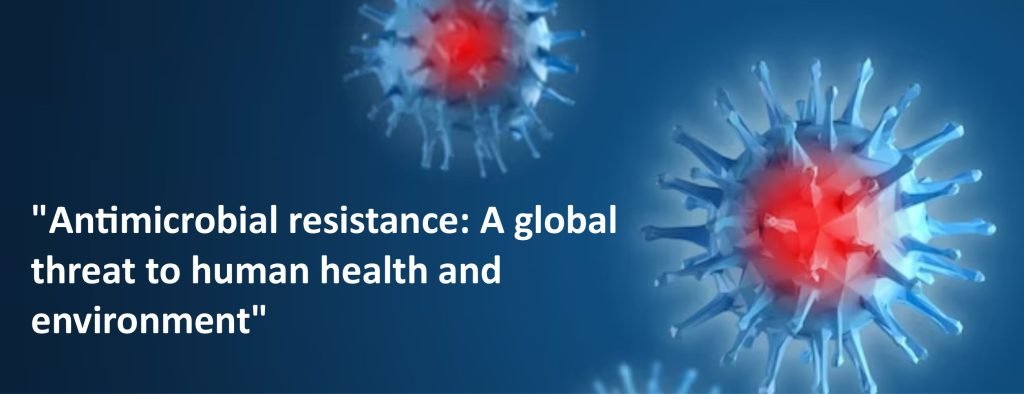04 Jan 2024 Antimicrobial Resistance
This article covers ‘ Daily Current Affairs ’ and the content details of ‘‘ NCDC survey on inappropriate use of antibiotic causing antimicrobial resistance’’. This topic has relevance in the “ Issues relating to development of services/social sector relating to Health “section of the UPSC CSE exam.
UPSC MAINS SYLLABUS GS-2 PAPER : Issues relating to development and management of Social Sector/Services relating to health
Why in the News ?
As per the recent survey of NCDC released by the Health Ministry only 6% of patients received antibiotics after a confirmed diagnosis, still 94% of patients received the prescriptions for these medications even before the diagnosis of the infection.
What is Antimicrobial Resistance?
Antimicrobial Resistance (AMR) refers to the capacity of bacteria, viruses, parasites, and fungi, among other microbes, to adapt and resist the actions of antimicrobial medicines, thereby making these medications useless. Antimicrobial-resistant bacteria have the ability to proliferate and spread, which can result in the development of infections that are difficult or impossible to treat.

What Causes Antimicrobial Resistance(AMR)?
- Unsupervised access to antibiotics: When antibiotics are used in the dairy, poultry, and animal husbandry industries, they naturally sneak a way into other organisms’ food chains and hence affect humans as well.
- Insufficient Dosage and Duration: Bacteria that survive antibiotic prescriptions may become resistant if the course is not finished or if the whole dose is not taken as advised. A selection pressure brought about by insufficient doses favors the survival of resistant strains.
- Poor hygiene: Microbes spread through trash and wastewater from healthcare facilities, pharmaceutical companies, and animal husbandry.
- Antibiotic Overuse and Misuse: Excessive and inappropriate antibiotic use, both in human and animal health, contributes significantly to the development of resistance. This includes unnecessary antibiotic prescriptions for viral illnesses, inadequate treatment courses, and self-medication.
- Globalization and Travel: Increased worldwide travel and trade help in the spread of resistant bacteria around the world. Resistant strains have the ability to go beyond boundaries, making it difficult to limit and manage their spread.
Issues caused by Antimicrobial Resistance
- Treatment Options Are Limited: The number of effective antibiotics is decreasing as resistance grows. The absence of new medicines in development worsens the problem by giving doctors less treatment options for infections.
- Mortality and morbidity have increased: Infections caused by resistant bacteria are related with increased mortality and illness severity. Treatment failures increase healthcare expenditures and put an increased load on healthcare systems.
- Global Health Danger: AMR is a serious danger to world health because it can make common illnesses untreatable. This decreases the effectiveness of medical operations that depend on the availability of effective antibiotics, such as surgery, chemotherapy, and organ transplants. For example, Multi-Drug Resistant Tuberculosis (MDR-TB) is increasing exponentially.
- Infectious Disease Burden: India has a high burden of infectious diseases such as tuberculosis, malaria, typhoid and cholera. The rise of AMR makes it harder to treat these diseases successfully. It’s especially troubling given that these diseases are already big public health issues in the country.
- Limited Research and Innovation: To combat AMR, research and innovation in the development of novel antibiotics, diagnostics, and vaccines are important. The lack of such attempts in India is worrying as it decreases the arsenal of techniques available to treat resistant illnesses.
- Economic Consequences: AMR results in increased healthcare costs due to prolonged treatments, additional testing, and the need for more expensive second-line drugs. Productivity losses from prolonged illness and increased mortality also impact economies.
Steps taken to control antimicrobial resistance?
- Access, Watch, and Reserve (AWaRe) – It is an initiative by WHO to consider the impact of various antibiotics.
- Global-One Health Approach: A quadripartite project by UNEP, WHO, FAO, and the World Organization for Animal Health which advocates best practices to minimize AMR levels.
- National Action Plan (NAP) for AMR : The NAP aims to raise awareness, strengthen surveillance, promote research, and improve infection prevention and control.
- Delhi Declaration on AMR: It is an inter-ministerial consensus, which was signed during the inauguration of NAP-AMR by ministers from the relevant ministries committing their unwavering support for AMR containment.
- Red Line campaign: To raise awareness about the dangers of using antibiotics without a prescription and to avoid irrational usage of prescription-only antibiotics.
Way Forward –
- Antimicrobial resistance is a future health disaster that requires a multidisciplinary strategy as well as R&D funding.
- Antimicrobial prescriptions should be based on definitive diagnosis rather than an assumption.
- The economic contribution of AMR is enormous, therefore it is vital to create and implement policies using a holistic “One Health” approach.
Conclusion
The emergence of antibiotic resistance is a huge public health issue all over the world. It makes even mild infections difficult to cure, resulting in serious illnesses and deaths. As a result, a loud call to halt this menace must be issued at the local, national, and global levels, which would eventually aid in the achievement of SDG 3, ensuring excellent health and well-being for everyone.
Download Yojna daily current affairs eng med 4th Jan 2024
Prelims practice questions
Q1) What is the primary cause of antimicrobial resistance (AMR)?
a) Underutilization of antibiotics
b) Proper adherence to antibiotic prescriptions
c) Overuse and misuse of antibiotics
d) Strict control of antibiotic distribution
Ans- C
Q2) Why is antibiotic resistance regarded as a worldwide health risk?
a) It only affects underdeveloped countries
b) resistant infections are easier to cure
c) it restricts treatment options and raises mortality rates
d) it has no effect on public health.
Ans- C
Mains practice Question
Q) Describe how agriculture contributes to antibiotic resistance. How can sustainable farming methods be used to reduce the development of resistance in animals and its possible transmission to humans?
I am a content developer and have done my Post Graduation in Political Science. I have given 2 UPSC mains, 1 IB ACIO interview and have cleared UGC NET JRF too.


No Comments